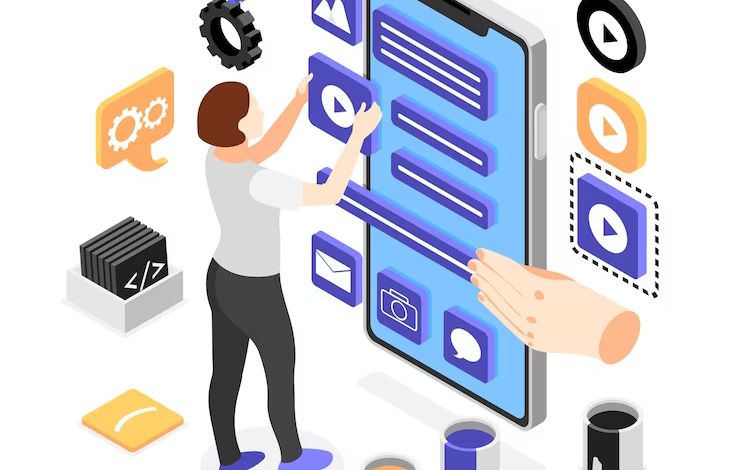Choosing the right tools and frameworks for DApp development

Introduction to DApp development
Decentralized applications (DApps) are a new and innovative way to develop applications that operate on a decentralized network. In contrast to traditional applications, DApps are designed to run on a blockchain, providing a trustless and transparent environment for users.
DApp development involves a combination of blockchain technology and traditional application development. Developers use blockchain frameworks, smart contracts, and decentralized storage systems to build applications that can be run on a distributed network.
DApps have gained popularity in recent years due to their security, transparency, and ability to operate autonomously without the need for intermediaries. These applications can be used for a variety of purposes, such as financial transactions, gaming, social networking, and more.
As the demand for DApps continues to grow, choosing the right tools and frameworks for development becomes crucial to ensure a successful project. In the following sections, we will explore the factors to consider when choosing DApp development tools and frameworks and the top options available in the market.
Why choosing the right tools and frameworks matters
Choosing the right tools and frameworks for DApp development is critical for several reasons:
- Efficiency: The right tools and frameworks can significantly improve the development process, making it faster, more efficient, and less prone to errors. This is especially important in DApp development, where even a small mistake can result in significant losses for users.
- Scalability: DApps are designed to operate on a decentralized network, and as such, must be able to scale effectively. Choosing the right tools and frameworks can help developers build applications that can handle large volumes of transactions without sacrificing performance.
- Security: Security is a top priority in DApp development, as any vulnerability can be exploited to steal funds or compromise user data. Choosing the right tools and frameworks can help developers build applications that are more secure and less susceptible to attacks.
- Compatibility: DApps must be compatible with a variety of devices, operating systems, and browsers. Choosing the right tools and frameworks can ensure that the application runs smoothly on different platforms and devices, providing a seamless user experience.
- Cost: Choosing the wrong tools and frameworks can be costly, both in terms of time and money. Investing in the right tools and frameworks from the outset can save developers time and money in the long run and prevent costly mistakes or rework.
Overall, choosing the right tools and frameworks in DApp development can help developers build applications that are more efficient, scalable, secure, compatible, and cost-effective.
Factors to consider when choosing DApp development tools and frameworks
When choosing DApp development tools and frameworks, there are several factors that developers should consider to ensure the success of their project. These factors include:
- Development team expertise: Developers should choose tools and frameworks that align with their skills and expertise. Choosing tools and frameworks that are too complex or unfamiliar can lead to delays, errors, and lower-quality code.
- Blockchain platform: Different blockchain platforms have different capabilities and requirements, so developers must choose tools and frameworks that are compatible with the platform they are using. For example, Ethereum developers may prefer to use Solidity for smart contract development, while developers working on other platforms may use different languages such as Rust, Java or C++.
- Development community: A strong development community can provide support, resources, and updates for tools and frameworks. Developers should choose tools and frameworks that have an active community to ensure ongoing support and development.
- Scalability: DApps must be able to handle large volumes of transactions, so developers should choose tools and frameworks that are scalable and can handle increasing demand.
- Security: Security is critical in DApp development, so developers should choose tools and frameworks that have strong security features and are less prone to vulnerabilities.
- Interoperability: DApps may need to interact with other applications or platforms, so developers should choose tools and frameworks that are interoperable and can communicate with other systems.
- Cost: The cost of tools and frameworks can vary widely, so developers should choose options that are cost-effective and provide the necessary features and functionality.
By considering these factors, developers can choose tools and frameworks that align with their needs, goals, and capabilities, ultimately leading to a more successful DApp development project.
Top tools and frameworks for DApp development
There are many tools and frameworks available for DApp development, each with their own strengths and weaknesses. Here are some of the top options:
- Truffle: Truffle is a popular development framework for Ethereum DApps that provides a suite of tools for smart contract development, testing, and deployment.
- Remix: Remix is a web-based IDE for developing and testing smart contracts on the Ethereum blockchain. It has an easy-to-use interface and provides a range of debugging and testing features.
- Embark: Embark is a development framework that supports Ethereum, IPFS, and other decentralized technologies. It provides a range of features such as smart contract deployment, decentralized storage, and testing.
- Ganache: Ganache is a personal blockchain for Ethereum development that allows developers to test and deploy smart contracts in a local environment. It provides features such as debugging, contract interaction, and blockchain visualization.
- Web3.js: Web3.js is a JavaScript library that provides a simple interface for interacting with the Ethereum blockchain. It can be used to build web-based DApps that can communicate with the blockchain.
- OpenZeppelin: OpenZeppelin is a library of reusable smart contracts for Ethereum that provides security-focused implementations of common features such as ERC20 tokens and multisig wallets.
- IPFS: IPFS is a peer-to-peer decentralized storage network that can be used to store files and data for DApps. It provides features such as content addressing, versioning, and encryption.
These are just a few of the many tools and frameworks available for DApp development. Developers should evaluate their needs and goals carefully to choose the right combination of tools and frameworks for their project.
Comparison of popular DApp development tools and frameworks
Here’s a comparison of some of the most popular DApp development tools and frameworks:
- Truffle:
- Truffle is a popular development framework for Ethereum DApps that provides a suite of tools for smart contract development, testing, and deployment. Truffle has a large development community and provides support for multiple blockchain networks. It also provides a range of features such as smart contract migration, testing, and debugging.
- Remix:
- Remix is a web-based IDE for developing and testing smart contracts on the Ethereum blockchain. It is easy to use and provides a range of debugging and testing features. Remix also has a built-in compiler and debugger, making it easy to develop and test smart contracts quickly.
- Embark:
- Embark is a development framework that supports Ethereum, IPFS, and other decentralized technologies. It provides a range of features such as smart contract deployment, decentralized storage, and testing. Embark also has an integrated web server, making it easy to develop and test DApps locally.
- Ganache:
- Ganache is a personal blockchain for Ethereum development that allows developers to test and deploy smart contracts in a local environment. It provides features such as debugging, contract interaction, and blockchain visualization. Ganache is a great tool for testing DApps before deploying them on the Ethereum network.
- Web3.js:
- Web3.js is a JavaScript library that provides a simple interface for interacting with the Ethereum blockchain. It can be used to build web-based DApps that can communicate with the blockchain. Web3.js is a versatile library that can be used to interact with various blockchain networks, making it a popular choice for developers.
- OpenZeppelin:
- OpenZeppelin is a library of reusable smart contracts for Ethereum that provides security-focused implementations of common features such as ERC20 tokens and multisig wallets. OpenZeppelin is a great choice for developers who want to save time and ensure the security of their DApps by using pre-built, audited smart contracts.
- IPFS:
- IPFS is a peer-to-peer decentralized storage network that can be used to store files and data for DApps. It provides features such as content addressing, versioning, and encryption. IPFS is a great choice for developers who want to build DApps that require decentralized storage and file sharing.
In summary, Truffle, Remix, Embark, Ganache, Web3.js, OpenZeppelin, and IPFS are all popular DApp development tools and frameworks that offer different features and capabilities. Developers should choose the tools and frameworks that align with their needs, goals, and expertise.
Pros and cons of using different DApp development tools and frameworks
Here are some pros and cons of using different DApp development tools and frameworks:
- Truffle:
Pros:
- Easy to use and provides a suite of tools for smart contract development, testing, and deployment.
- Large community of developers and provides support for multiple blockchain networks.
- Provides a range of features such as smart contract migration, testing, and debugging.
Cons:
- Can be slow to compile and deploy smart contracts.
- Limited support for decentralized storage and other decentralized technologies.
- Remix:
Pros:
- Web-based IDE that is easy to use and provides a range of debugging and testing features.
- Built-in compiler and debugger make it easy to develop and test smart contracts quickly.
- Provides a range of tools for testing and debugging smart contracts.
Cons:
- Limited support for smart contract deployment and other DApp development features.
- Requires an internet connection to use.
- Embark:
Pros:
- Supports Ethereum, IPFS, and other decentralized technologies.
- Provides a range of features such as smart contract deployment, decentralized storage, and testing.
- Integrated web server makes it easy to develop and test DApps locally.
Cons:
- Can be difficult to set up and use for developers who are new to DApp development.
- Limited documentation and community support compared to other frameworks.
- Ganache:
Pros:
- Personal blockchain for Ethereum development that allows developers to test and deploy smart contracts in a local environment.
- Provides features such as debugging, contract interaction, and blockchain visualization.
- Great for testing DApps before deploying them on the Ethereum network.
Cons:
- Limited support for decentralized storage and other decentralized technologies.
- Can be difficult to set up for developers who are new to DApp development.
- Web3.js:
Pros:
- JavaScript library that provides a simple interface for interacting with the Ethereum blockchain.
- Can be used to build web-based DApps that can communicate with the blockchain.
- Versatile library that can be used to interact with various blockchain networks.
Cons:
- Limited support for smart contract development and testing.
- Requires knowledge of JavaScript programming language.
- OpenZeppelin:
Pros:
- Library of reusable smart contracts for Ethereum that provides security-focused implementations of common features such as ERC20 tokens and multisig wallets.
- Saves time and ensures the security of DApps by using pre-built, audited smart contracts.
- Large community of developers and provides support for multiple blockchain networks.
Cons:
- Limited flexibility compared to building custom smart contracts.
- Can be difficult to customize and integrate into existing DApps.
- IPFS:
Pros:
- Peer-to-peer decentralized storage network that can be used to store files and data for DApps.
- Provides features such as content addressing, versioning, and encryption.
- Great for building DApps that require decentralized storage and file sharing.
Cons:
- Limited support for smart contract development and testing.
- Can be difficult to integrate into existing DApps.
In summary, each DApp development tool and framework has its own strengths and weaknesses. Developers should consider their needs, goals, and expertise when choosing the right combination of tools and frameworks for their project.
Best practices for choosing DApp development tools and frameworks
Here are some best practices to consider when choosing DApp development tools and frameworks:
- Consider your needs and goals: Before choosing any tool or framework, it’s essential to identify your needs and goals. Ask yourself what kind of DApp you’re building, which blockchain network you’ll be using, what features you need, and what your development team’s skills and expertise are.
- Research and compare: Research and compare different DApp development tools and frameworks to find the ones that best fit your needs and goals. Check their features, capabilities, performance, and community support. Don’t forget to read reviews and feedback from other developers who have used them.
- Prioritize security and reliability: Security and reliability should be your top priorities when choosing DApp development tools and frameworks. Ensure that the tools and frameworks you choose have a proven track record of security and reliability. Look for those that are well-audited, tested, and have a large community of developers.
- Choose open-source tools and frameworks: Open-source tools and frameworks have many benefits, including transparency, flexibility, and community support. They also allow you to customize and modify the code to fit your needs. Look for those that are well-documented and have an active community.
- Consider the learning curve: Consider the learning curve of the tools and frameworks you’re considering. Make sure they’re easy to learn and use, especially if you’re new to DApp development. You don’t want to waste time and resources learning a tool or framework that’s too complex for your team’s skills and expertise.
- Test and evaluate: Before committing to a tool or framework, test and evaluate it thoroughly. Try building a small DApp or prototype to see how it performs and how well it meets your needs and goals. Use this experience to make an informed decision about whether to continue using the tool or framework.
- Stay up-to-date: DApp development is a rapidly evolving field, and new tools and frameworks are being developed all the time. Stay up-to-date with the latest developments and trends in the industry, and be open to trying new tools and frameworks that can improve your DApp development process.
By following these best practices, you can choose the right DApp development tools and frameworks that can help you build secure, reliable, and high-performing DApps that meet your needs and goals.
Conclusion: Making the right choice for your DApp development project.
In conclusion, choosing the right tools and frameworks for DApp development is essential for the success of your project. By considering factors such as blockchain network compatibility, security, performance, ease of use, and community support, you can find the tools and frameworks that best meet your needs and goals. Remember to prioritize security and reliability, choose open-source tools, and evaluate them thoroughly before committing to a particular tool or framework. By following these best practices, you can ensure that your DApp development project is on the right track and can deliver a high-quality, secure, and reliable DApp that meets your users’ needs and expectations.




